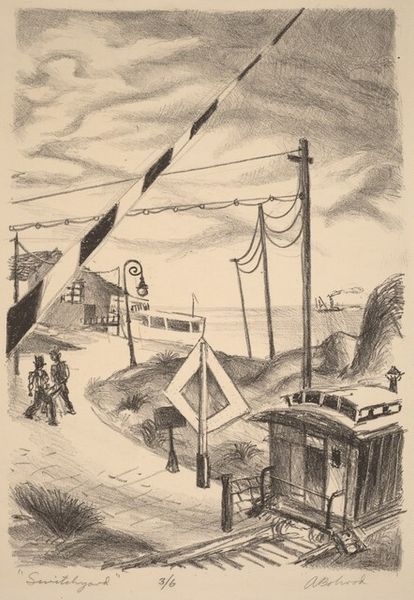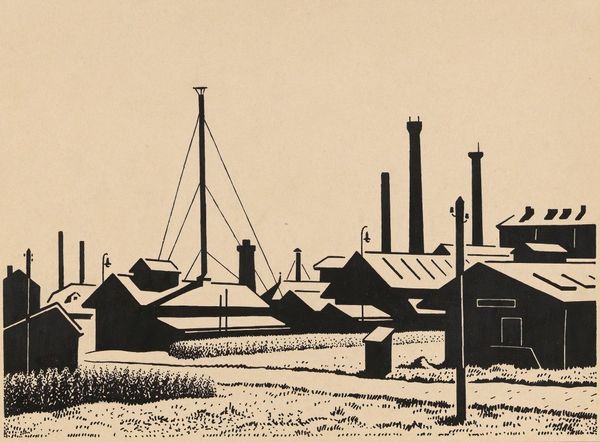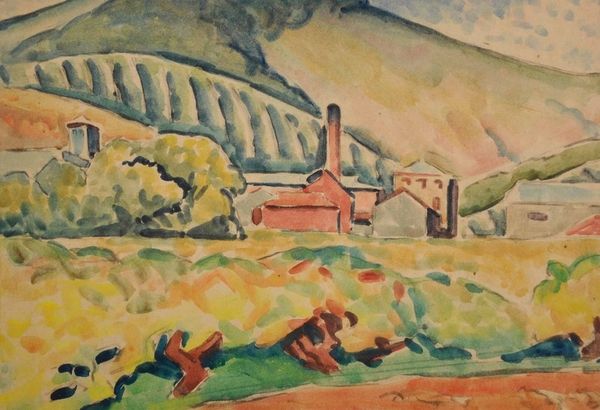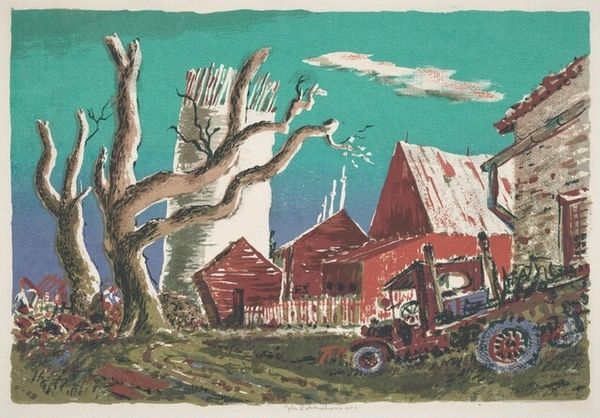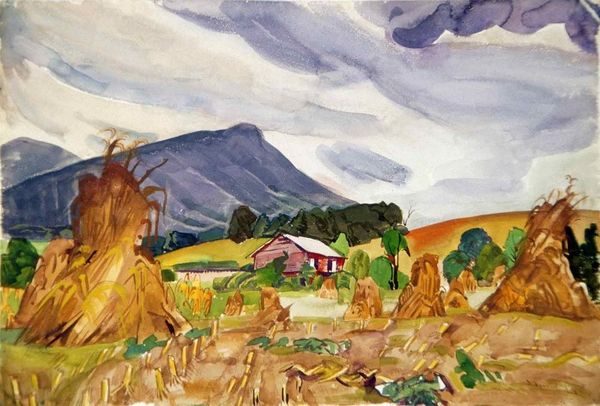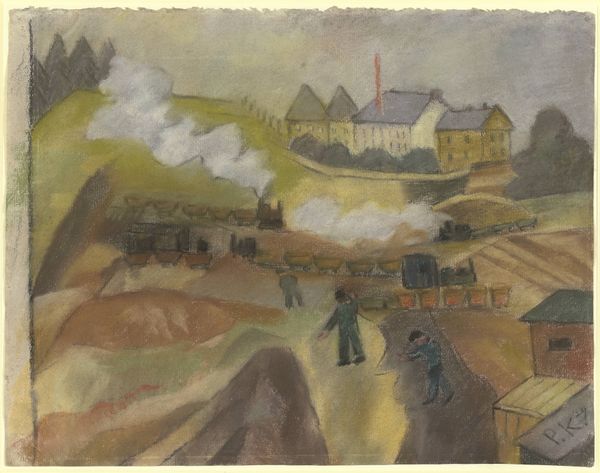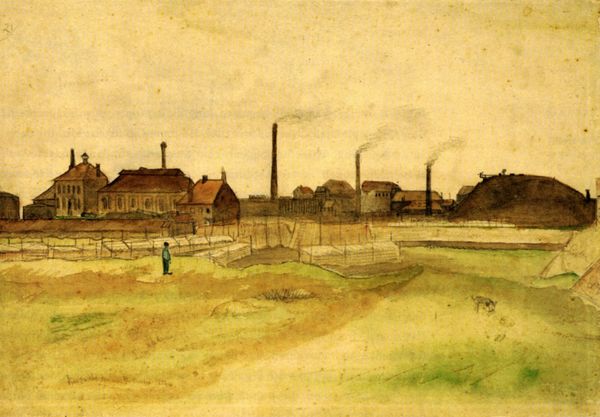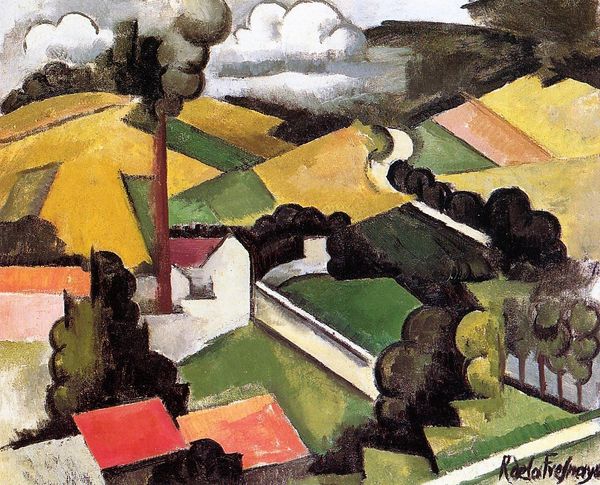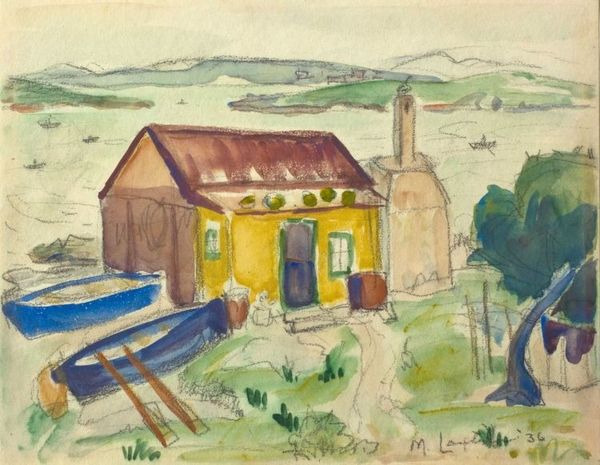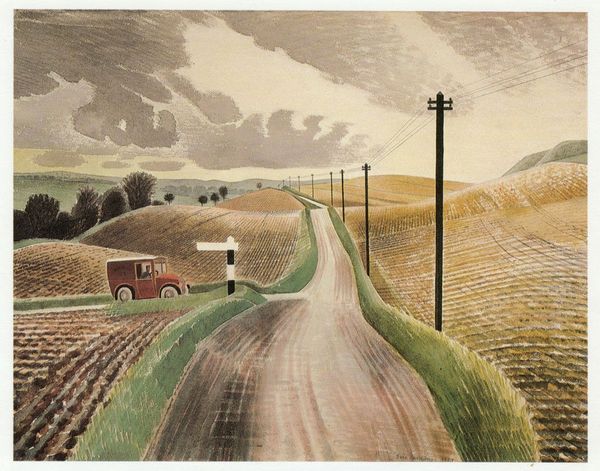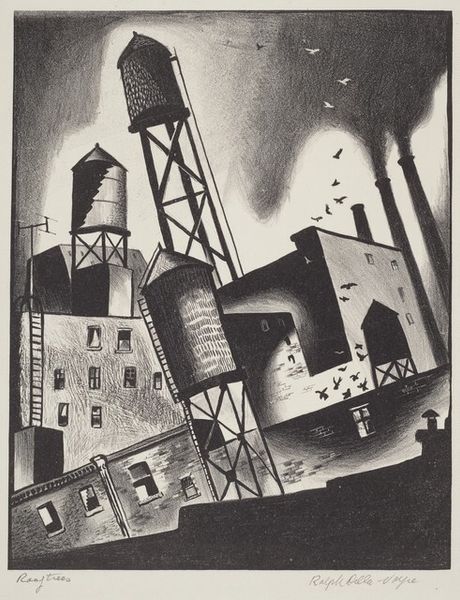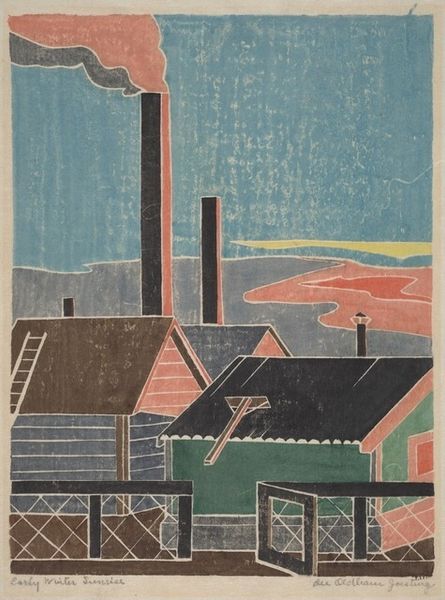
Copyright: Max Pechstein,Fair Use
Editor: Here we have Max Pechstein's "Die Schwalben sammeln sich (Ückeritz i. Pommern)," painted in 1949, a watercolor landscape. I’m struck by how the utility pole and wires, weighed down with birds, bisect what otherwise feels like a nostalgic village scene. What do you make of this imagery? Curator: The birds, clinging to the lines, suggest a tension between the natural world and encroaching modernity. It’s 1949 – post-war. Those lines are not just carrying electricity; they're conduits for information, for change. Editor: So, the swallows aren't simply decorative? They symbolize something deeper? Curator: Precisely. Swallows, traditionally associated with home and return, are here almost overwhelmed by the technology, gathered en masse like information being processed or awaiting dispersal. Consider the collective noun – a "swallow flight" - a message crossing geographic barriers and psychological divides. The artist has subtly rendered an idyll overshadowed. Editor: The image feels so simple, almost naive, but the symbolism adds layers. Do you see a connection to earlier cultural ideas about nature? Curator: Definitely. Romantic notions of nature as untouched are complicated. These swallows become intermediaries. Their presence transforms the electric lines into organic, almost living structures, yet it begs the question: are they being supported or constrained? How might their migration differ going forward, if the village itself has been transformed, or worse, abandoned? Editor: I see. It is a reminder that even the most picturesque scenes hold complex histories. Thanks, I am left with much to contemplate. Curator: My pleasure, every artistic choice provides a sign, and we only need to understand what signs to read, in ourselves and within each other.
Comments
No comments
Be the first to comment and join the conversation on the ultimate creative platform.
